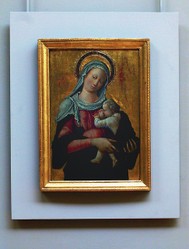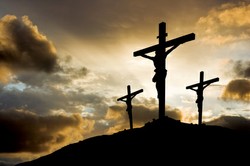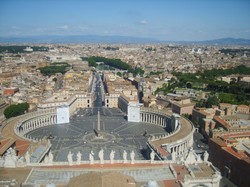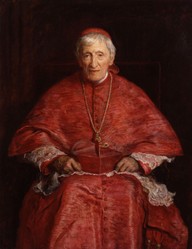The ancient road from Jerusalem to the Black Sea runs along the coast, and gives lovely views over the wine-dark Mediterranean. There by the roadside stands a once neglected house. It was architecturally obviously well-constructed in the first century style, made of stone, though the ravages of ages had caused the roof to fall in. Three pilgrims approach the door: one a Catholic, the other an orthodox Christian and the other a Muslim. The three greet each other, pay and enter. They are there with common purpose, to honour Mary the mother of Jesus. They are visiting a site that the local people of the area have deemed sacred for centuries, and these locals, who claim descent from early Christians in the area, believe that Mary was there. Reason enough to deem it sacred. But what was Mary doing there?
The year thirty eight was a bad year for Christians. Herod Agrippa the First,, who ruled all of Palestine between thirty six AD and thirty nine, had had James the brother of John executed [a fancy name for legalized murder) and Peter had been arrested only for an angel to free him from prison and give him the opportunity to escape, but it was clear that senior members of the church were being targeted. As a woman Mary was not the most senior target, but she was up there with the top targets. But John the apostle was missed out from the initial arrests., giving him time to flee with the others. The scattered Christians went to many places, taking the gospel with them. Significantly this is the year when Mary is said to have been taken to Ephesus. Why choose Ephesus? It was only in modern day Turkey, so it was not far from Judea, where the church was based. Furthermore, there were two viable routes: going by donkey overland, but donkeys are slow and uncomfortable. Speed was of the essence, and Mary, by that time not a young woman, would not have found the ground journey easy. The other route was sea transport from Caesarea, a sea port on the Mediterranean coast, or less conveniently, from Joppa. This would be more comfortable and faster. Furthermore, Ephesus was a town where Herod, a local ruler In Palestine, had no authority, and where the crowds in what was a pagan metropolis, would have given the fugitive Christians cover. Ephesus it was.
The house is a construction pretty standard for that period, well-situated, not in the city of Ephesus, which was sometimes disorderly, but in the countryside outside the city, about four miles from the town, enough to provide a quiet place where the Christians could get on with their worship.
The persecution did not last long. In 44 Herod died suddenly and the Roman procurator who took over had no interest in persecution. Did Mary return home? We do not know. But there is a tradition that she died at Jerusalem.







 TheThousand Year Gardenon 11/26/2025
TheThousand Year Gardenon 11/26/2025
 Women of the Gospelson 10/11/2025
Women of the Gospelson 10/11/2025
 Religious Gardenson 08/25/2025
Religious Gardenson 08/25/2025
 Doctor of the Church: John Henry Newmanon 08/03/2025
Doctor of the Church: John Henry Newmanon 08/03/2025




Comments
Salome9
Thank you for your comment below, Aug. 11, 2023, in answer to my previous, same-day observation and question.
John of Damascus alerting us to Saint Joseph as widowered with children intrigues me.
Is there no information anywhere or in Christian tradition as to the name of St. Joseph's first wife or as to her burial place?
Almost certainly it is true. His sons would have helped him.Joseph had other sons who are mentioned in the gospel John of Damascus says that Joseph was a widower with children
Farmers' markets here sometimes have Christian book sellers. I remember seeing a Vacation Bible School-type story book that had Jesus Christ sitting at a table that Saint Joseph had made for his family.
Would that be an accurate home-life indicator, that Jesus Christ and Saint Joseph, even as wooden yoke-makers for oxen, would have made their own family furniture?
About Mary's parents we know nothing other than their names Mary would have had some knowledge of their work, but she would have learned female I skills from her mother, as was the custom then.
This, western-pond side tends toward daughters in car-work, construction and farming families being adequately if not competitively proficient with sons in those regards.
What was Anne's father's work and what was Joachim's work? Would Our Lady Mary have had some helpful awareness of their work and of Saint Joseph's?
Not really, halters were not the classiest of goods, they were routine farm goods.
That's interesting about wooden halter-making for oxen.
Would that have been considered an especially skilled aspect of working with wood?
No. There was a Palestinian tradition, but I cannot source it, maybe Eusebius, that the family made wooden halters for oxen
Your explanation of tecton as brick- or stone-builder or woodworker caused me to recall a book that I read either in the Salt Lake City Family History Library or the Salt Lake City Public Library.
That book's author suggested that Jesus Christ and Saint Joseph might have been stone-workers instead of carpenters.
That was something that I never had come across before (nor have I since). Would there be any tradition of the two Holy Family members as stonemasons?